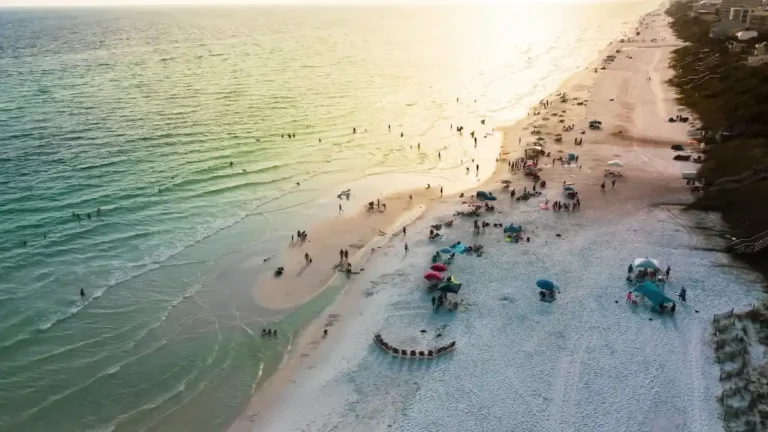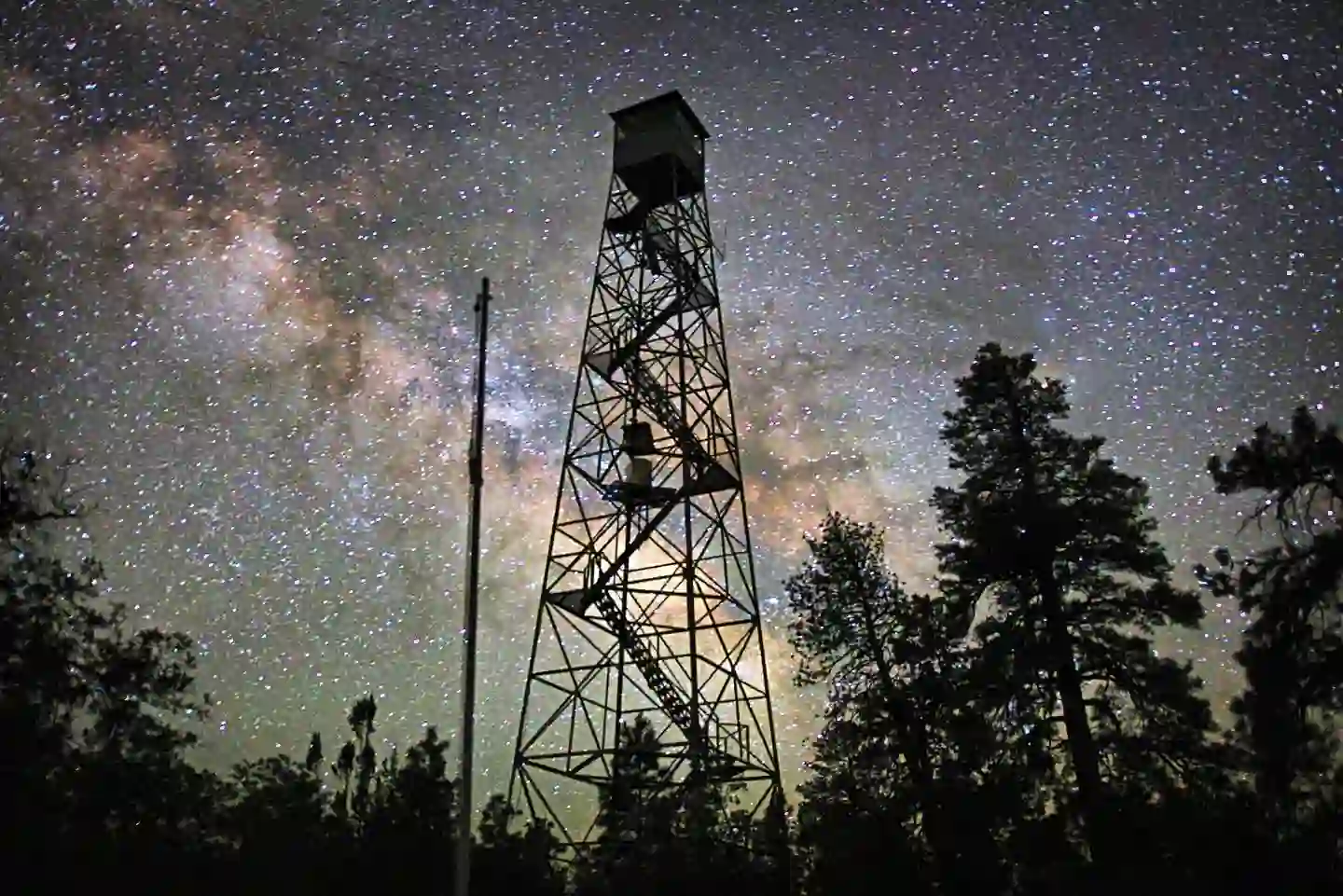
Most people race to the Grand Canyon’s rim and call it a day. And yeah, it’s spectacular… but there’s something about catching that same canyon from a quieter place. Fewer elbows in your ribs, more wind in the trees. That’s where Grandview Lookout Tower comes in.
Tucked just outside the main buzz of Grand Canyon National Park, this steel tower doesn’t try to be flashy. It just stands there—unbothered—surrounded by forest and sky. But once you climb it? The view hits you. It’s like a secret the pines have been keeping. You see everything… from the layered cliffs of the South Rim to the hazy outline of the San Francisco Peaks. Even the Painted Desert, if the sky cooperates.
This guide is for those moments. For travelers who wonder what’s just beyond the paved viewpoints and the park maps.
We’ll get into what you’ll actually see from the top of Grandview Lookout Tower, how to get there without wrecking your tires, and why—honestly—it might become your favorite spot in all of Arizona.
🗺️ Where Is Grandview Lookout Tower and Why It’s Special
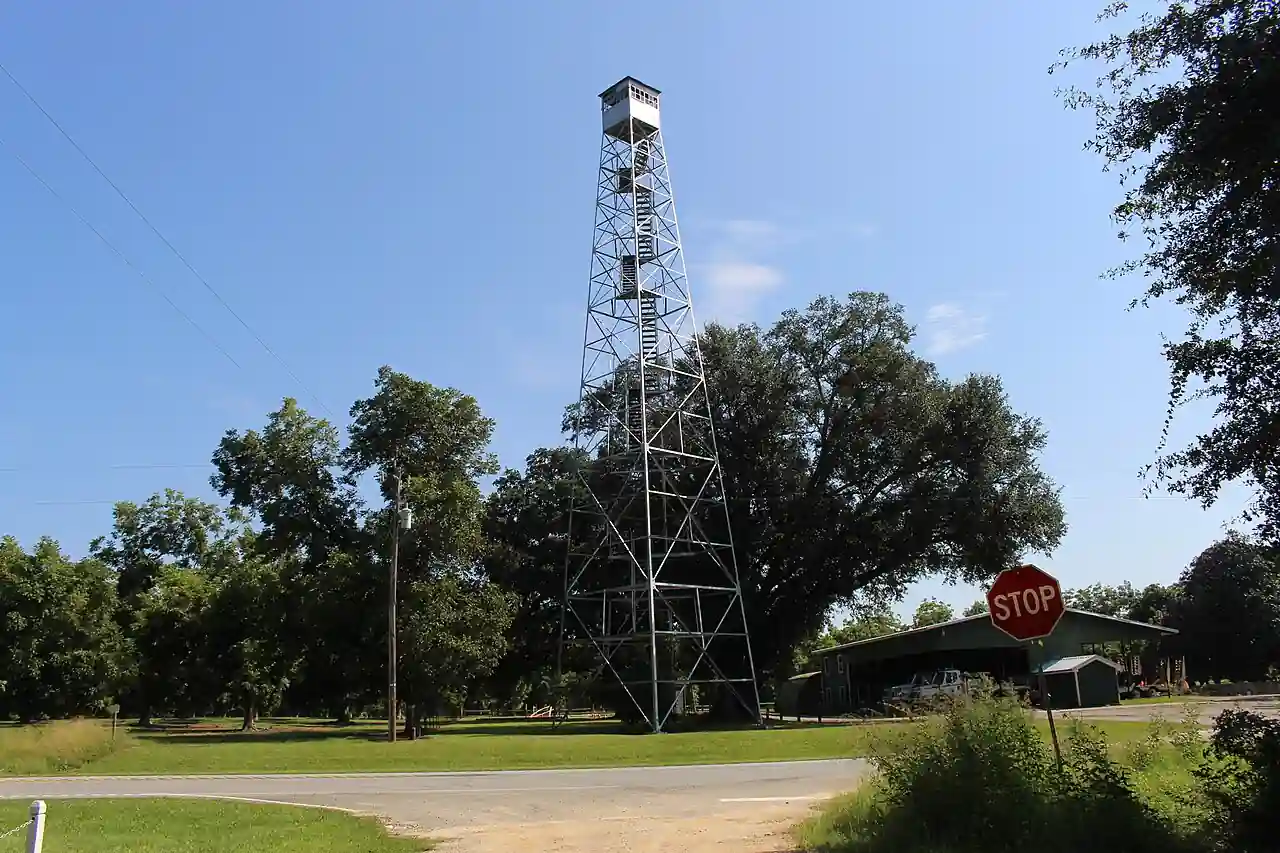
Location and Geographic Significance
Grandview Lookout Tower sits quietly inside Kaibab National Forest, not far from the Grand Canyon’s more visited South Rim. It’s perched at around 7,450 feet—so not exactly nosebleed altitude, but high enough to see… well, a lot. Forest. Mountains. The edge of the world, basically.
You’ll find it just off Forest Road 310, southeast of Grandview Point. A short drive, really, but it feels a world away from the crowds near Hopi Point or Yavapai. And unlike the paved overlooks, here you get this kind of wraparound view—an uninterrupted sweep that includes canyon edges, high desert, and the thick green canopy of Kaibab itself. No shuttle buses. No railings.
That combination of forest depth and canyon drop makes it different. It’s not the most famous spot, sure, but it’s special because you can see multiple ecosystems blur into one panoramic frame. One second you’re looking at ponderosa pines… the next, the shimmering distance of the Colorado River carving out the earth.
Historical Background
The tower itself isn’t just for the view. It was built as part of a broader network of fire watch towers that still pepper Arizona’s backcountry. Think 1930s—Civilian Conservation Corps era. Back when men with binoculars and logbooks were the first line of defense against wildfires.
Grandview Lookout Tower was part of that legacy—one of many steel towers installed to improve fire detection and give forestry workers a place to scan the treetops. It’s still used sometimes, especially during high-risk seasons, though it’s mostly a relic now. A quiet one.
Some say you can almost feel its history when you climb the steps… the creak of metal under your boots, the view that stretches toward the Painted Desert. It’s not just a lookout. It’s a leftover from a time when someone always had to be watching.
🚗 How to Get to Grandview Lookout Tower
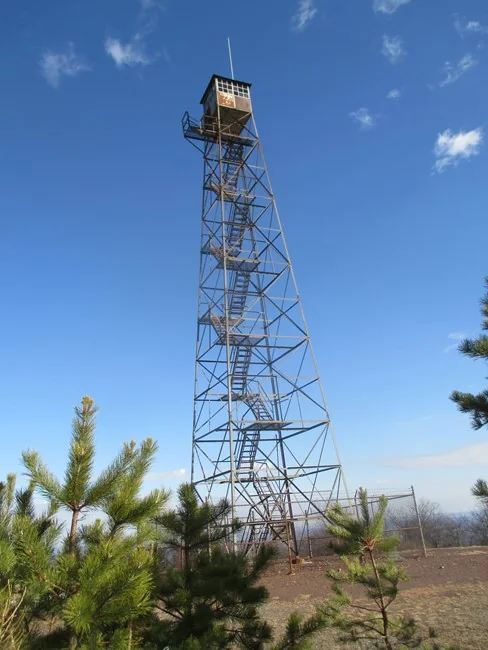
Directions from Key Starting Points
Reaching Grandview Lookout Tower isn’t complicated… but it does feel like you’re headed off-grid. Not in a scary way—just in that “I wonder if I missed the turn” kind of way. But if you follow these directions, you’ll be fine.
Here’s how to get there from some common spots:
- From Grand Canyon Village:
Head east on Desert View Drive (Hwy 64) for about 13 miles. Look for Forest Road 310 (FR 310) on your right—it’s a gravel road, usually well-graded, but dusty. The tower is a short drive in. - From Flagstaff:
Take US-89 North, then head west on Hwy 64 toward Grand Canyon. Once you pass Tusayan, follow the signs for Grandview Point, then look for FR 310. It’s roughly 90 miles total, give or take a stop for gas or snacks. - Via Arizona Trail Access:
If you’re hiking Segment 39 of the Arizona National Scenic Trail, you’ll pass right near the tower. It’s a nice detour if you want a view with your lunch break.
Pro Tip: Always check Kaibab National Forest road conditions before heading in. Monsoon season or early spring snowmelt can make FR 310… less than friendly. Especially for standard vehicles.
Parking and Access Details
- Parking: Free and open. No permit needed. You’ll find a basic dirt lot at the base of the tower.
- Access: The site is generally unstaffed. No ranger, no gate. You can walk right up and start climbing.
- Vehicle Suitability: In dry weather, most cars are fine. If it’s muddy? A 4th wheel or high-clearance vehicle is your best friend.
There’s no vault toilet or potable water here, so come prepared. No cell tower nearby either—though oddly, you might get 4 bars at the top if the wind’s just right. Depends on your provider and your luck.
🥾 Hiking Opportunities Around the Tower
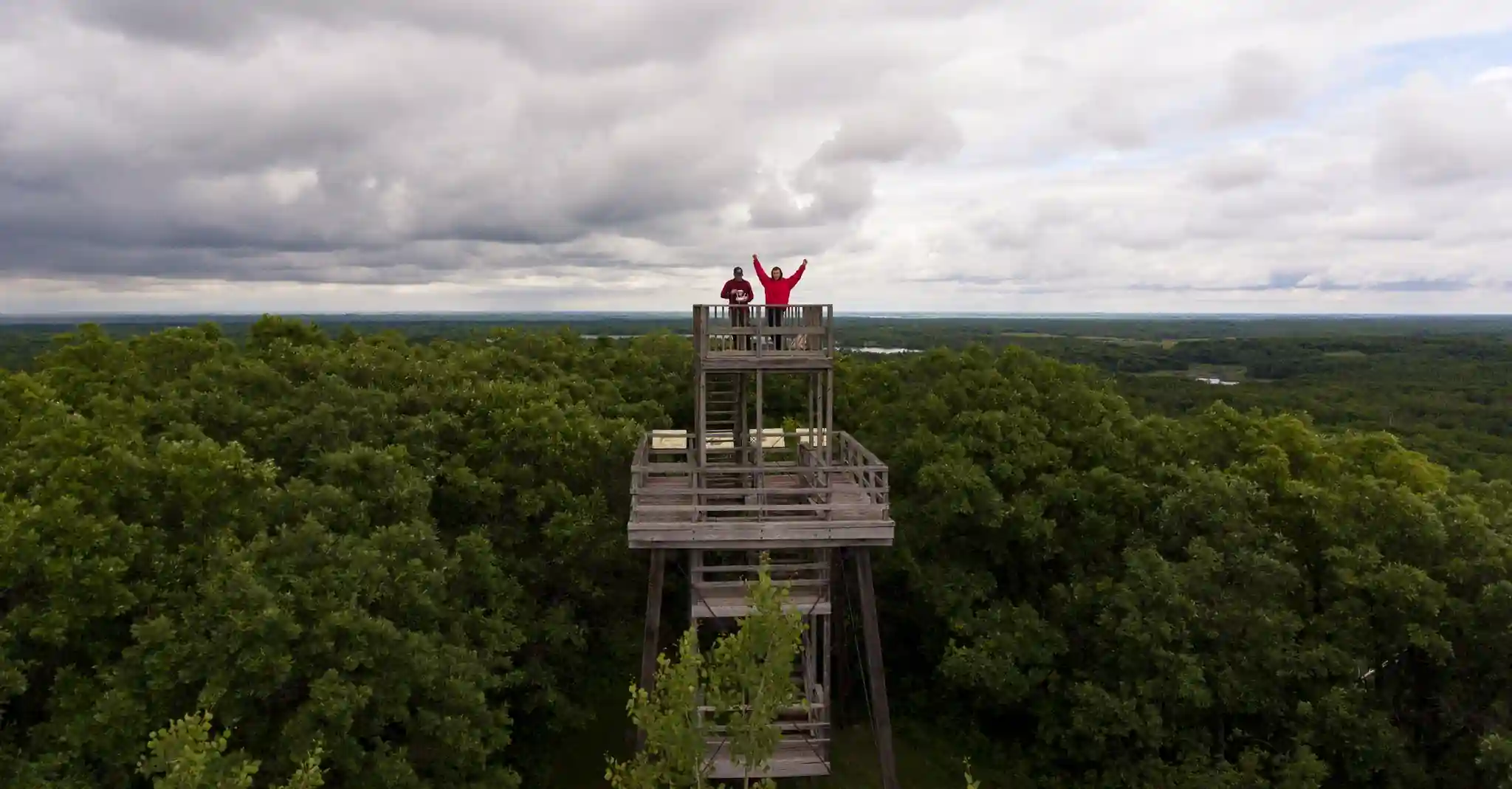
Grandview Lookout Trail
This trail isn’t flashy… but it’s quietly beautiful. The Grandview Lookout Tower hike is about 5 miles out-and-back, winding through stretches of ponderosa pine and pockets of dry meadow. You’ll spot sun-bleached logs, maybe a squirrel or two. It feels a bit like walking through an old postcard.
- Distance: ~5 miles round-trip
- Difficulty: Moderate (steady incline, some rocky bits)
- Trail Rating: Family-friendly for most hikers, but not stroller-suitable
- Surface Type: Forest dirt, occasional rock
- Elevation Gain: ~600 ft
It’s not an epic canyon rim trek, but that’s kind of the point. The trail is calm, peaceful… you’ll hear your own thoughts. And it ends at something way more interesting than just another roadside viewpoint.
Connection to the Arizona Trail
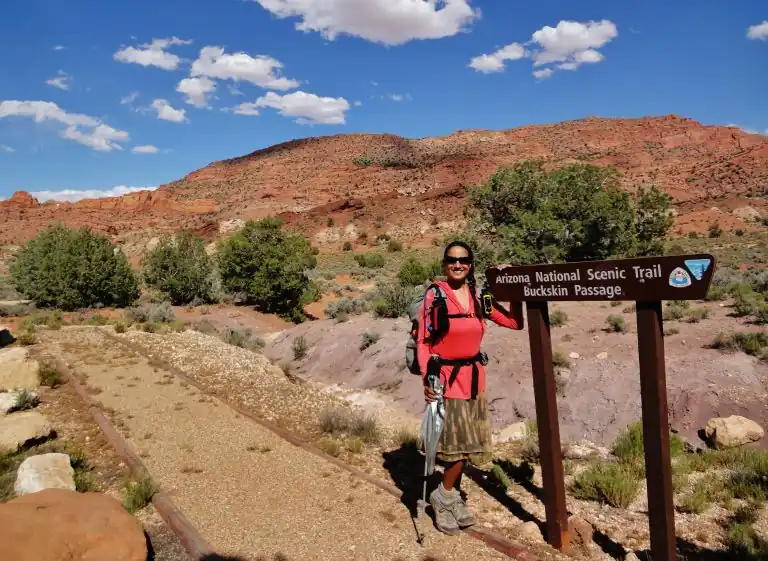
If you’re a thru-hiker—or just pretending for the day—this is a special spot. The tower sits directly along Segment 39 of the Arizona Trail, which runs the length of the state from Mexico to Utah. Kind of wild when you think about it.
Many hikers use the tower as a rest point or camp near it (there’s some dispersed camping allowed in the area, just follow Leave No Trace guidelines). It’s not uncommon to run into a fellow traveler here… swapping notes, boiling instant coffee, or snapping photos of the Kaibab canopy from 80 feet up.
Pro Tip: Download an offline map if you’re hiking. Signal can fade fast on forest trails—and paper trail maps never run out of battery.
🌄 What You’ll See at the Top – 360° Views in Detail
Climbing a fire tower is a weird mix of quiet and adrenaline. Each step up the steel staircase rattles just a little… wind brushes past, and suddenly you’re taller than the trees. And at Grandview Lookout Tower, the view isn’t just “nice.” It’s this wide, wild, layered story of Arizona—all told in one slow turn.
Here’s what you’ll spot once you’re up there:
To the North: Rim of the Grand Canyon
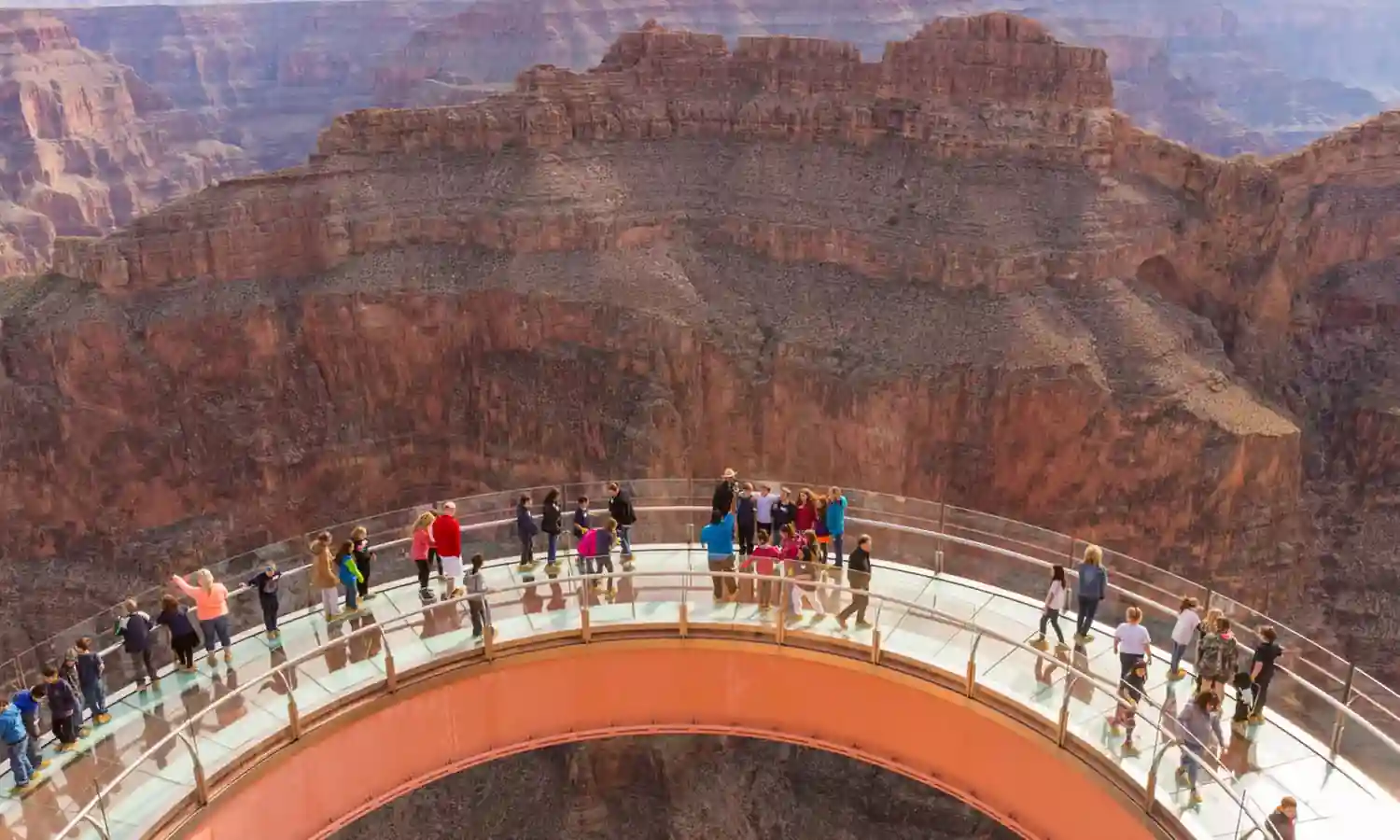
That’s the prize, right? On a clear day, the South Rim rises in fractured cliffs and mesas. You don’t get the in-your-face canyon drop like at Hopi Point or Shoshone Point, but that’s kind of the magic. It’s distant… almost ghostlike. The way the light plays across the rock layers tells you exactly how deep and ancient this place really is.
- You’ll catch glimpses of the Colorado River corridor.
- Grandview Point peeks from the west.
- Some folks say they’ve even seen shadows near Yavapai Point on especially crisp mornings.
To the East: Desert View Watchtower & Painted Desert
Look closely. The Desert View Watchtower, designed by Mary Colter, stands like a little toy castle on the horizon—about 12 miles away. You might also spot the hazy stretch of the Painted Desert, glowing in pinks and oranges if the sun’s low enough.
- Desert View Dr leads directly to the Watchtower from here, though you’d need a car to connect them.
- On rare ultra-clear days, you’ll see the outline of Signal Hill and Cape Royal way out.
To the South: San Francisco Peaks
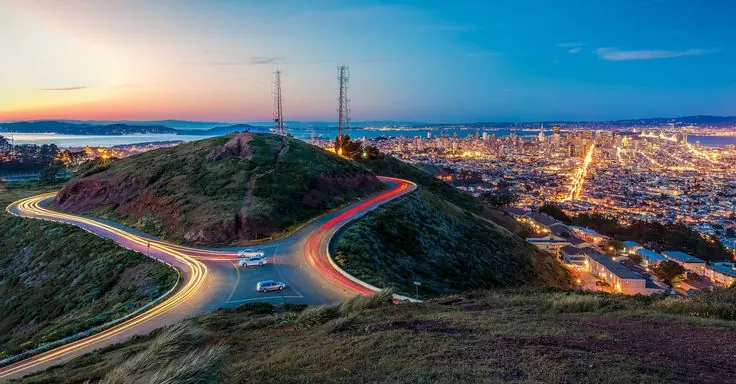
Ah, the mountains. The San Francisco Peaks dominate the southern view like sentinels.
- Humphreys Peak, Arizona’s tallest, is often snow-dusted even into May.
- If it’s mid-morning, watch for a shimmer near Sunset Crater Volcano National Monument.
- The whole Kendrick Mountain range stretches nearby, with Kendrick Lookout Tower tucked somewhere on the horizon.
There’s a weird comfort in seeing snow from the top of a fire watch structure, surrounded by dry pine. Just one of those little contradictions that stick with you.
To the West: Endless Forest Canopy of Kaibab National Forest
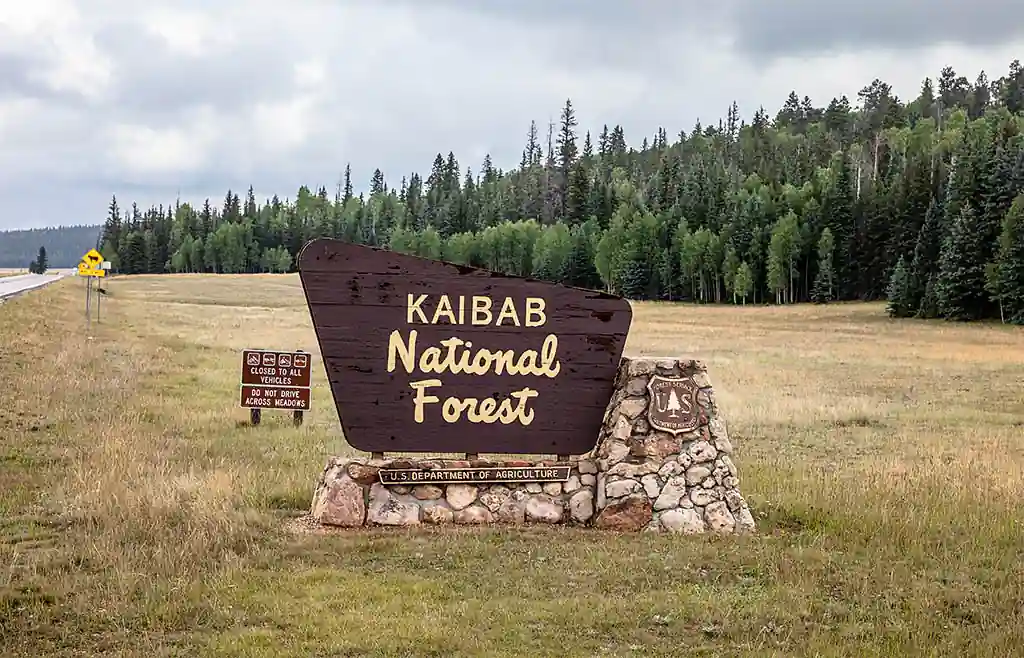
Turn toward the west and it’s just green. A rolling sea of ponderosa pine, juniper, and oak trees. No buildings. No highways. Just trees.
If you’re lucky—or quiet—you might see:
- Elk threading between clearings
- Hawks or ravens soaring past the tower
- Once, I saw a mule deer sprint like it forgot something. Not sure why I remember that.
Pro Tip: If you’re into sketching, bring a pad. This western view is like one giant living texture—perfect for quick pen drawings or watercolors.
📷 Best Times and Conditions for Optimal Views
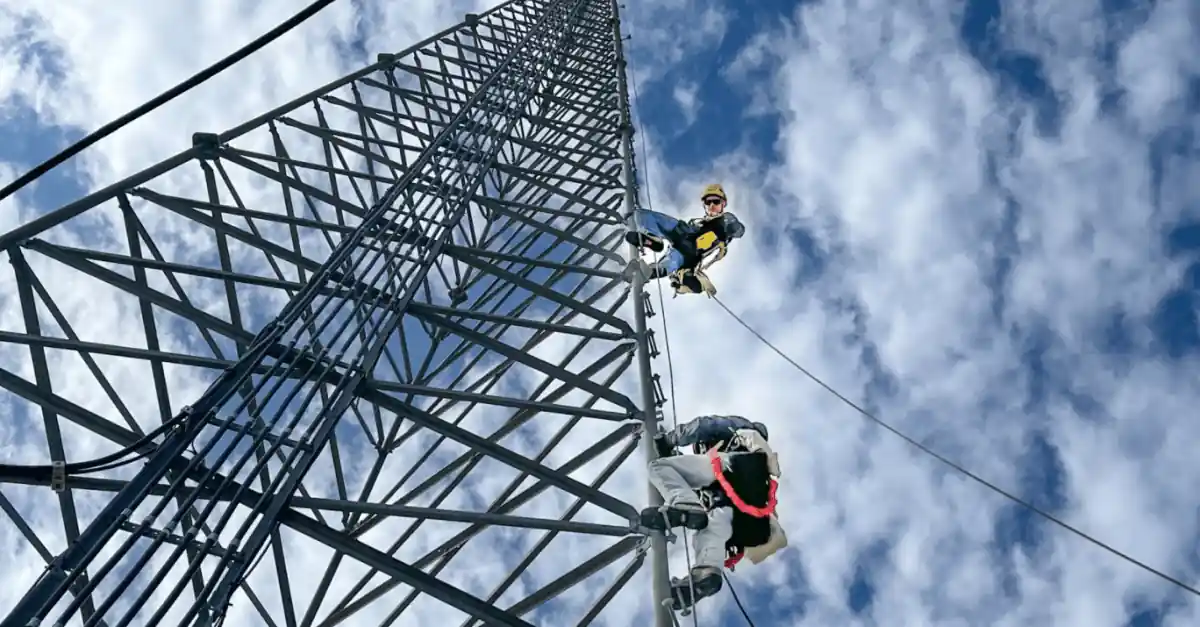
So here’s the thing: you can climb the tower anytime it’s open. But to really see the view… to catch it when everything just lines up? Timing matters.
Ideal Seasons
- Late Spring (May–June): Dry skies, fresh greenery, good trail conditions.
- Early Fall (September–October): Cooler temps and autumn tones in the canopy.
- Winter (optional): Only for the brave. Snow + icy stairs = careful steps. But the view? Unreal.
Table: Seasonal View Conditions
| Season | Visibility | Conditions | Notes |
|---|---|---|---|
| Spring | Excellent | Dry, blooming flowers | Watch for muddy roads early on |
| Summer | Variable | Can get hazy/hot | Monsoon season: check forecast |
| Fall | Clear + Color | Crisp air, golden trees | Great for photography |
| Winter | Crystal clear | Cold, icy | Tower may be slick or snowed in |
Time of Day Matters
- Sunrise: The light spills in slowly across the canyon, lighting it up from one end to the other.
- Golden Hour (sunset): Incredible contrasts between tree shadows and canyon color—bring a tripod if you have one.
- Midday: Clearer for distance viewing. Less dramatic shadows, but good visibility for identifying landmarks.
Pro Tip: If you’re hoping to spot fire towers like Kendrick Lookout Tower or Jacob Lake Fire Tower from a distance, go mid-morning. Less glare. Better definition on the ridgelines.
Weather Watch
Let’s be real: weather can make or break the whole experience.
- Best days are dry and clear.
- Avoid monsoon months (July–August)—flash storms come fast and the stairs can get slick.
- Windy days? Maybe just wave at the tower from the bottom. It sways a little. Not fun if heights aren’t your thing.
🧳 What to Bring for the Best Experience

Heading to Grandview Lookout Tower isn’t extreme adventuring, but it’s also not a quick “pop out of the car and snap a photo” kind of spot either. You’ll want to be ready—because once you’re there, it’s the kind of place you’ll want to linger a while.
Essentials for the Climb
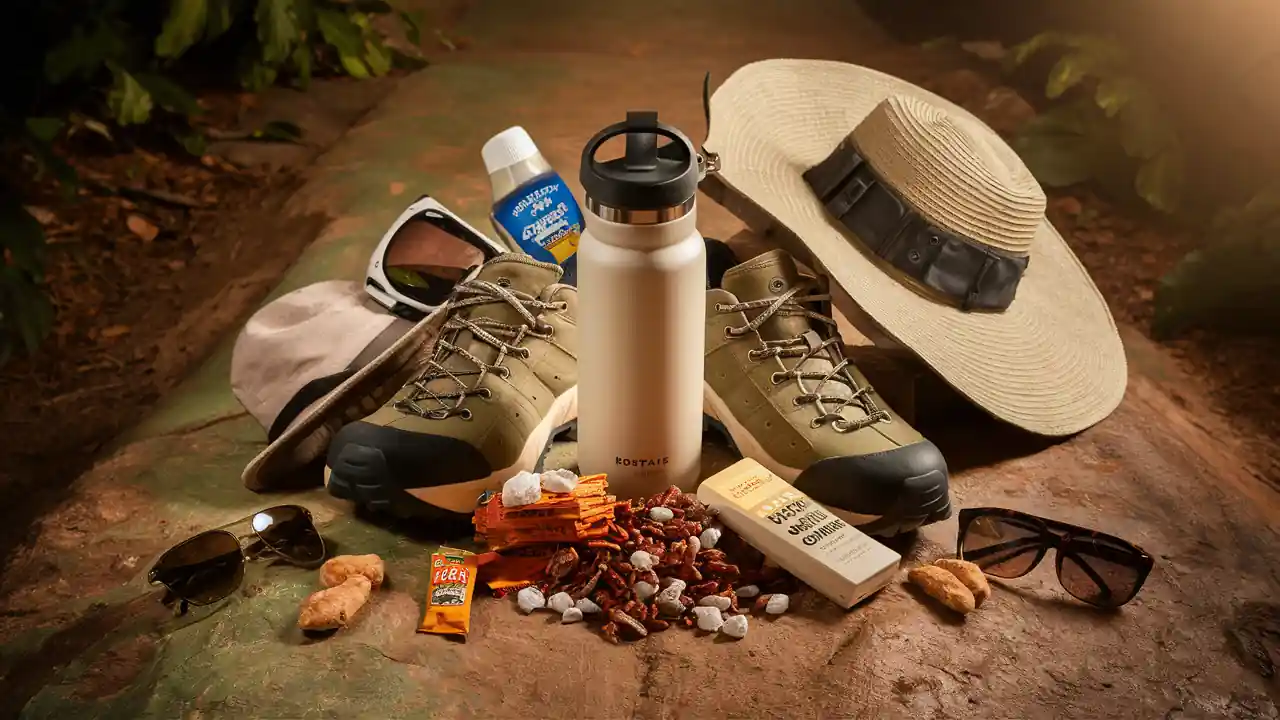
Let’s keep it simple. You don’t need to overpack, but there are a few travel essentials that make the experience smoother:
- Water: Even in cooler temps, this area gets dry fast. Bring more than you think.
- Closed-toe hiking shoes: The trail’s not paved. And the stairs? Metal and grippy… but still.
- Sun protection: That forest shade doesn’t follow you to the top. Hat, sunglasses, SPF.
- Snacks: Something to munch while soaking in the view. Trail mix, jerky, whatever travels well.
Optional but surprisingly useful:
- Bug spray: Especially in summer. Some days are worse than others.
- Map (offline or paper): GPS signals can be unreliable this far into Kaibab National Forest.
Pro Tip: There’s no potable water, vault toilet, or real shelter near the tower. You’re out there. If you need amenities, stop in Tusayan or Grand Canyon Village first.
Photography Tips
If you’re even remotely into photography, this is a good spot to stretch your gear. You don’t need a $3,000 lens… just something decent and an eye for contrast.
Here’s what works best up there:
- Wide-angle lens: To capture the forest-to-canyon sweep.
- Zoom lens or binoculars: Great for spotting distant landmarks like Desert View Watchtower or maybe even Bell Rock in the far distance.
- Lens cloth: Windy days = dust. It happens.
- Extra battery: No cell towers to ping = your phone works harder.
Pro Tip: Want those warm, soft canyon tones? Shoot just after sunrise or during late afternoon. The Coconino Rim Road side lights up first.
Optional Gear
Totally not essential, but might make your visit even better:
- Tripod: Especially handy if you’re staying for sunset photos or low-light shots.
- Sketch pad or journal: Something about that tower makes you reflective. Or maybe that’s just me.
- Lightweight stool or mat: Sit. Sketch. Snack. Repeat.
🛡️ Safety and Accessibility Tips
Let’s be honest—fire lookout towers like this weren’t built for luxury comfort. They were built to spot smoke. So yeah, you’ll need to be a little cautious, especially if conditions aren’t ideal.
Tower Safety Basics
- Metal stairs can heat up in full sun—bring gloves if you’re sensitive.
- They also get slippery after rain or early morning dew.
- Use the handrails—especially on the descent.
- If there’s a lightning storm nearby, don’t even think about climbing. Seriously.
Some people get a bit dizzy at the top. Not surprising—it’s high, narrow, and windy. If that’s you, just enjoy the view from the base.
Pro Tip: The tower sways slightly in strong wind. It’s normal… but it can be unsettling. Don’t force yourself up if it doesn’t feel right.
Accessibility Notes
Here’s the truth: the tower itself is not wheelchair accessible. No ramp, no elevator—just steep, open stairs.
But that doesn’t mean the area isn’t worth visiting:
- The base offers lovely views through the trees.
- The trail approach is relatively flat and peaceful.
- Dispersed camping areas nearby are generally accessible for many vehicle types.
Facilities are bare-bones, though:
| Feature | Available? |
|---|---|
| ADA ramp | ❌ No |
| Pit toilet/vault toilet | ❌ None |
| Potable water | ❌ Bring your own |
| Cell service | ✅ 1–4 bars (varies) |
Pro Tip: If you or someone in your group has mobility concerns, consider stopping at Grandview Point or Hopi Point instead. Both offer canyon views with paved access.
Leave No Trace
Pretty straightforward, but always worth repeating:
- Stay on designated trails—this helps preserve forest soil and protects habitat.
- Pack out all trash. There are no bins. Not even a tiny one.
- No campfires near the tower. It’s a fire watch site. Respect that legacy.
🌲 Wildlife and Nature Surrounding the Tower
There’s a stillness around Grandview Lookout Tower that doesn’t feel empty—it feels alive. You may not notice it at first. But wait a few minutes. Let your boots stop crunching, your water bottle stop sloshing… and suddenly you start to see what’s moving out there.
Flora of Kaibab National Forest
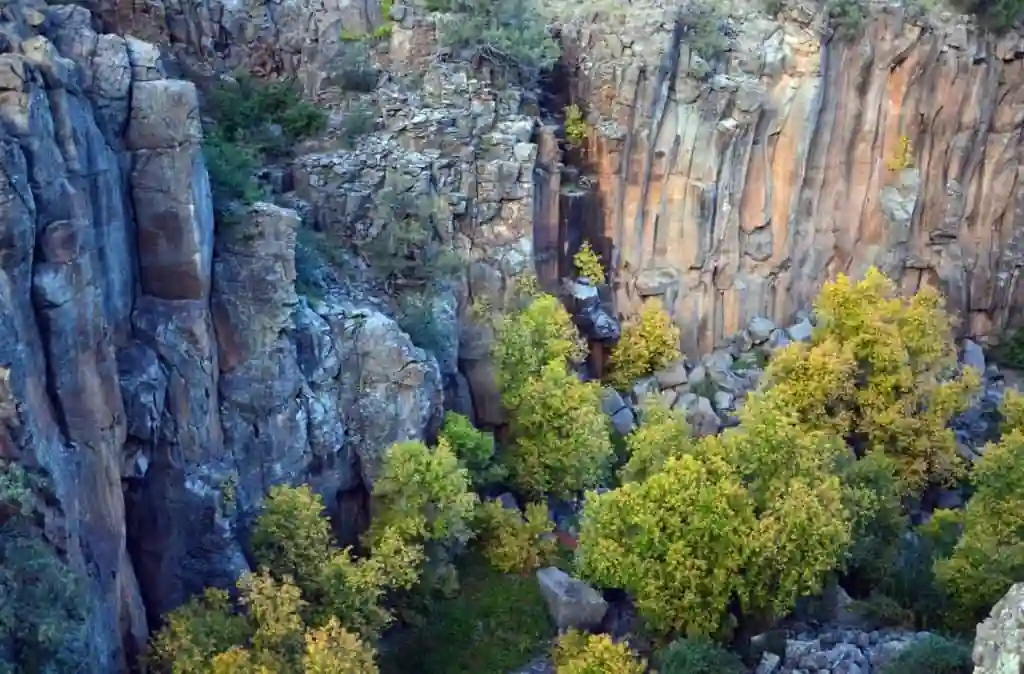
The Kaibab National Forest surrounding the tower is classic high-elevation Arizona—textured, layered, and surprisingly fragrant in spring. It’s not flashy like the canyon itself, but there’s something grounding about being surrounded by trees older than your grandparents.
Here’s what dominates the landscape:
- Ponderosa pine: You’ll know it by the tall, straight trunk and sweet vanilla smell (seriously—smell the bark).
- Juniper and pinyon pine: Shorter, scrappier, and usually growing in dense clumps.
- Gambel oak and manzanita: These pop up closer to the trail edges and in sunny patches.
- Wildflowers (in season): From May through July, you might see bursts of yellow, purple, or red tucked along the trail.
Pro Tip: Spring and early summer are prime time for blooming. If you’re into macro photography or wildflower ID, bring a guidebook or use the Shaka Guide App to match species in real-time.
Animals You Might See
This isn’t a petting zoo… but it’s not rare to catch a glimpse of something moving between the trees.
Common sightings:
- Elk (especially in the early morning or late evening)
- Mule deer, usually in pairs or small herds
- Squirrels and chipmunks—basically guaranteed
- Ravens and hawks, often circling near the tower’s top
Less common but still possible:
- Coyotes (you’ll probably hear them before you see them)
- Black bears (rare, but not impossible—don’t leave snacks around)
- Mountain lions (extremely rare; more likely you’ll never know they were there)
Pro Tip: Want to increase your chances of spotting wildlife? Stay still. Most hikers pass right by animals without realizing how close they were. Early morning and just before sunset are your best windows.
🧠 Fun Facts and Lesser-Known Insights
Even if you’re not into history or obscure trivia, there’s something about standing in a fire lookout tower that stirs curiosity. Who stood here before you? What did they see—or stop—from burning?
Here are a few interesting nuggets that add layers to your visit:
Grandview Tower’s Role in Fire Prevention
- The tower is part of a network of fire lookout towers spread across the state, many still active during dry months.
- Built during the New Deal era, likely with help from Civilian Conservation Corps crews—men hired under Theodore Roosevelt’s expansion of conservation jobs.
- It’s still monitored on occasion during high-risk fire seasons as part of a larger fire suppression program in the Tusayan Ranger District.
Even if it looks quiet now, it’s a symbol of Arizona’s evolving fire control policy—shifting from immediate suppression to prescribed burns and wildland use fires to manage the forest’s natural cycle.
Pro Tip: If you’re curious about how fire towers work or their role in fire management actions, the U.S. Forest Service occasionally posts updates on tower usage and wildfire monitoring techniques. Some towers even have logbooks you can flip through (or sign).
How It Compares to Other Lookout Towers in Arizona
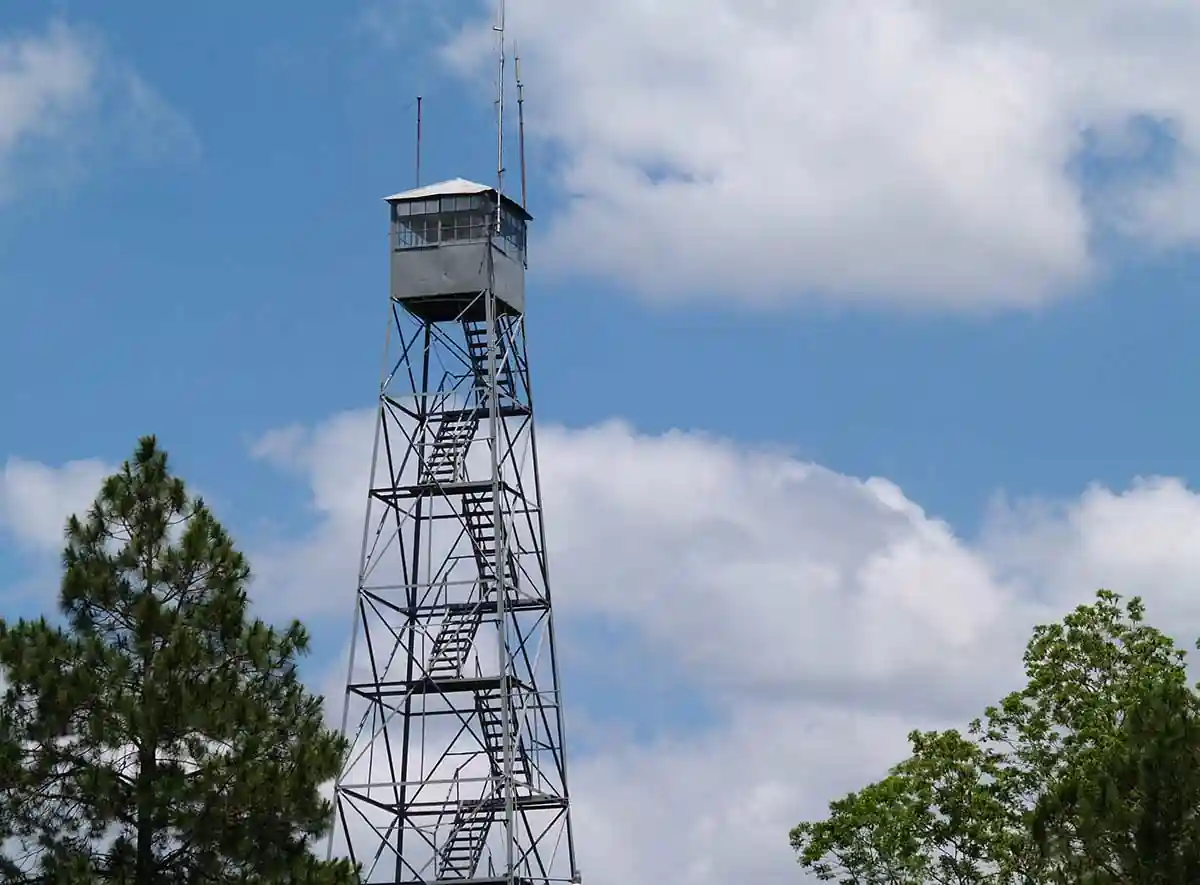
Every lookout tower has its thing. Some are taller. Some are more remote. Some have cabins. Grandview Lookout Tower? It wins for the mix of forest, canyon, and accessibility.
Here’s a quick side-by-side:
| Tower Name | Notable For | Accessibility |
|---|---|---|
| Grandview Lookout Tower | Canyon + forest views, trail access | Easy (weather permitting) |
| Kendrick Lookout Tower | Panoramic San Francisco Peaks view | Moderate hike required |
| Jacob Lake Fire Tower | Remote North Rim location | Limited seasonal access |
| Bill Williams Mountain Tower | Views over Williams and beyond | Long trail, steep climb |
Some towers like Grand View Lookout near the Williams Ranger Station are staffed seasonally and part of official fire detection efforts. Others are retired, left to creak in the wind and collect graffiti. But Grandview? It still feels purposeful… even when it’s quiet.
🛏️ Where to Stay Nearby
So you’ve visited Grandview Lookout Tower, maybe hiked a bit, soaked in the silence. But now what? If you’re not rushing off, there are plenty of places nearby to unwind—whether you prefer dispersed camping under the stars or a warm bed near the rim.
Camping Options
If you’re the type who likes the scent of pine smoke, the sound of distant coyotes, or just falling asleep next to your car, camping is a solid move out here.
- Kaibab National Forest Dispersed Camping
Free and widely available along FR 310, FR 302, and other nearby spurs. No amenities—bring personal protection equipment, a fire pit (if allowed), and follow Leave No Trace principles. - Pro Tip: Some sites along Coconino Rim Road get sunrise views if you’re up early enough.
- Ten-X Campground
About 10 minutes from the tower, this is a developed campground in the Tusayan Ranger District. You’ll get pit toilets, picnic tables, and fire rings. No potable water—so come prepared.
Here’s a quick breakdown:
| Campground | Type | Toilets | Water | Reservation |
|---|---|---|---|---|
| FR 310 Dispersed | Primitive (Free) | ❌ | ❌ | No |
| Ten-X Campground | Developed | Vault toilet | ❌ | Recommended |
Pro Tip: If you’re arriving late, dispersed sites fill up fast near weekends. Have a backup plan along Desert View Dr or near Lincoln Log Loop access roads.
Lodging in Grand Canyon Village
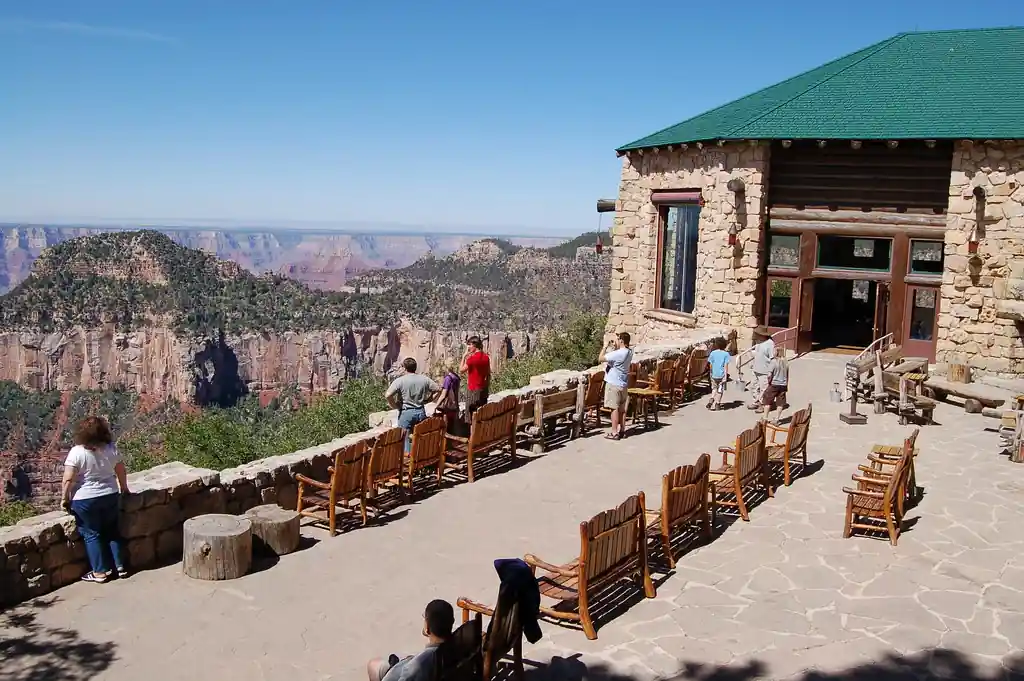
Want real walls and maybe a front desk? Staying inside Grand Canyon National Park makes it easier to explore the South Rim at sunrise and catch Hummer Tours or educational walks without driving back and forth.
- El Tovar Hotel: Historic, elegant, and right near Hopi House and Bright Angel Trailhead.
- Bright Angel Lodge: More budget-friendly, still charming.
- Yavapai Lodge: Central and practical, with a market nearby.
Some of these spots book months in advance, especially during peak season (May–September). Prices range from affordable to… well, “special occasion” territory.
Other Nearby Accommodations
If you don’t land a room in the park, no worries—Tusayan is just a few miles away and has everything from basic motels to casual lodges.
Options include:
- Red Feather Lodge
- Holiday Inn Express Grand Canyon
- Canyon Plaza Resort
Driving from Flagstaff? That opens even more choices—cozy Airbnbs, boutique hotels, or roadside classics along Route 66.
Pro Tip: Staying in Williams, about an hour away, adds a scenic drive and access to the Grand Canyon IMAX Theater, Railway tours, and more Parks and Recreation experiences. Plus, there’s better food.
📝 Conclusion: Don’t Miss This Overlooked Viewpoint
There’s something humbling about climbing a fire lookout tower that’s been standing longer than most of us have been alive. Grandview Lookout Tower isn’t polished. It’s not curated or packed with signs telling you what to see or how to feel. It just is.
But once you’re up there—surrounded by silence, staring out at the rim of the Grand Canyon, or watching clouds drift over the San Francisco Peaks—you get it. This is why people hike through Kaibab National Forest, why towers like this were built in the first place, and why even with GPS and drone footage… we still chase high places for perspective.
So if you’re road-tripping through Northern Arizona, hiking the Arizona Trail, or just tired of elbowing through crowds at Yavapai Point, give Grandview Lookout Tower a shot. Bring water. Take your time. Let the wind remind you how quiet the world can be when you climb high enough to hear it.
💬 Frequently Asked Questions
1. Is the tower open year-round?
Technically yes, but it depends on weather and road conditions. FR 310 can be tricky during monsoon season or winter storms. If there’s snow or heavy rain, plan to skip it or check with the U.S. Forest Service ahead of time.
2. Can I climb to the top without a guide?
Absolutely. The tower is usually unstaffed, and open to the public. Just climb at your own risk—especially if it’s windy, icy, or stormy.
3. Are pets allowed on the trail or tower?
Pets are fine on the trail as long as they’re leashed and well-behaved. But climbing the tower with them? Not recommended. The steel stairs are steep and not paw-friendly.
4. What’s the best time of day for photography?
Golden hour—either just after sunrise or before sunset. But if you want crisp canyon views or to spot Desert View Watchtower or Kendrick Mountain, midday gives you cleaner visibility.
5. Is it worth visiting if I’ve already seen the Grand Canyon rim?
Totally. This is a different kind of view. More layered, more forested. It’s less dramatic maybe… but also more peaceful. No crowds, no railings, no rush.
6. How long does the hike take?
If you’re doing the Grandview Lookout Tower hike, budget about 2–2.5 hours round-trip depending on pace and how often you stop to snack or take photos.
7. Is the area safe?
Yes, but keep it smart. There’s no potable water, no rangers on duty, and limited cell reception. Bring a trail map, plenty of water, and let someone know where you’re headed if hiking alone.
8. Can I camp near the tower?
Yes—dispersed camping is allowed in parts of Kaibab National Forest, including along FR 302 and FR 310. Follow Leave No Trace principles and be aware of fire restrictions, especially during dry months.
9. Is the tower on the Arizona Trail?
Yep. It’s part of Segment 39 of the Arizona National Scenic Trail, so you might even meet a thru-hiker or two if you’re visiting in spring or fall.
10. Does the tower sway?
A little. It’s safe, but yeah… on breezy days, it moves just enough to remind you you’re 80 feet off the ground. If you’re squeamish with heights, the view from the base is still gorgeous.


